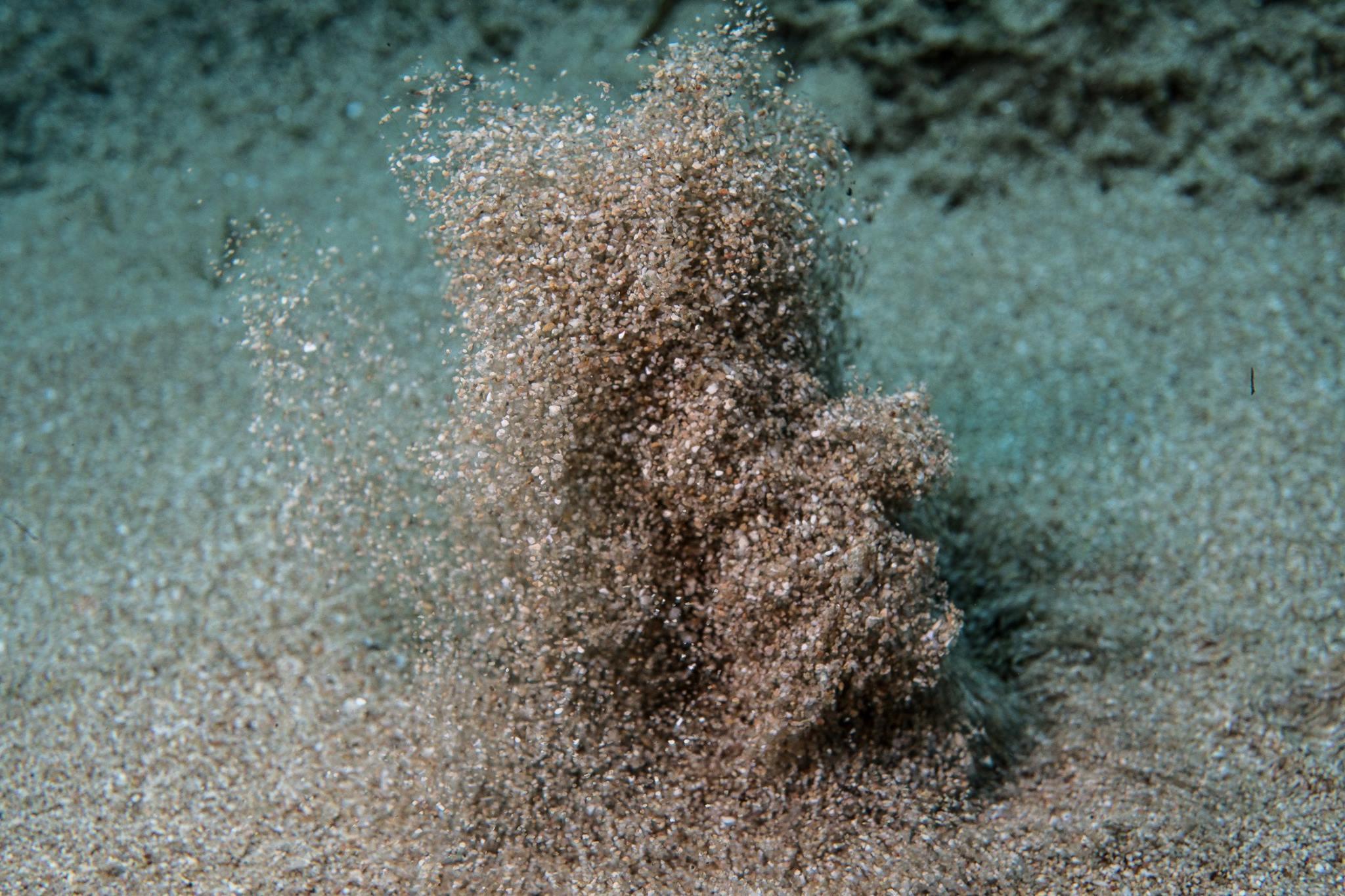
Sand erupts around a spring. Scott Bauer photo
Rains recharge aquifer and springs
Just months after the city and region were under strict water conservation measures, plentiful rains in September and early October have recharged the Edwards Aquifer and, by extension, the springs that form the San Marcos River.
The aquifer, which dipped to 641 feet above mean sea level (msl) as measured at the J-17 Index Well at Fort Sam Houston in San Antonio on Aug. 8, had rebounded to 683.4 msl on Wednesday with a 10-day average of 682.5. Likewise, the San Marcos Springs, which were flowing at a scant 118 cubic feet per second (cfs), on Aug. 27 and 28, measured 212 cfs Wednesday, with a 10-day average of 204 cfs.
Those who watch Spring Lake closely can actually see new springs that have popped up where none were before, according to Dr. Thom Hardy, chief science officer for The Meadows Center for Water and the Environment.
“Higher aquifer levels translate into many more springs in the lake,” Hardy said, explaining that most appear as low-pressure springs similar to those found in the springs field known as Cream of Wheat. “As levels come up, they start coming up all over the place.”
Another who has noticed is volunteer diver Scott Bauer. “I have been participating in the volunteer dive program for the Meadows Center for Water and the Environment consistently over the past two years,” he said.
“One of my favorite areas in the lake is a spot known as Cream of Wheat. This is a particular area to where the spring water entering the lake from the aquifer below passes through the lake’s flat sandy bottom. This creates a series of beautiful fountains of sand that bubble up as the water rises from underneath the lake bed. Over this past summer, I have noticed that the volume of water coming out of the this spring has been consistently slower than usual. This leads to more sediment build up on top of the sand and causes this area to lose its magical appearance. After this last period of heavy rainfall however, I have noticed these springs to be flowing stronger than ever. Not only has Cream of Wheat been flowing faster than usual, but I have noticed other low pressure springs appear in other areas around the lake bottom that I am not otherwise accustomed to seeing.”
As dramatic as the change has been over the lakebed landscape of mid-summer, both the springs and aquifer are still far below their historic highs. According to the Edwards Aquifer Authority (EAA), the J-17 Well hit an all-time high of 703.31. The all-time record flow for the San Marcos Springs, meanwhile, came in at a staggering 599 cfs on July 24, 2007. (Comal Springs, which is actually a larger system, has an all-time record flow of 534 cfs on Oct. 14, 1973.)
In addition to those lakebed springs, Hardy noted that more have become active along the Blanco River and Sessom Creek. “If you were to go out to every creek and spring along the Balcones Fault Line, all of them are going to be flowing more,” he noted.
For example, Jacob’s Well, which had slowed to a trickle — .09 cfs — on Aug. 23, is flowing again. “Blue Hole has water and the regional discharge of our artesian well is higher,” said Hardy, who recalled that when he first came to San Marcos, the river’s flow was only 89 cfs. “That was in 2009 and we were headed in that direction in a hurry a few months ago.”
Despite the current health status of both the aquifer and the springs, Hardy warned that it won’t last and people who are allowed to pump from the aquifer could abuse the privilege. “The scary part is people will think the drought is over so they can pump more water and drag the system down again rather than remaining conservative ...over the long run (we need to) train ourselves to be water wise rather than not worry about it.”
He pointed to a once-active San Antonio Springs system as an example. “San Antonio Springs are not there anymore because of all the development,” he said. “I’m not sure as a modern society we know how many springs were in the region prior to the pumping of groundwater.”











